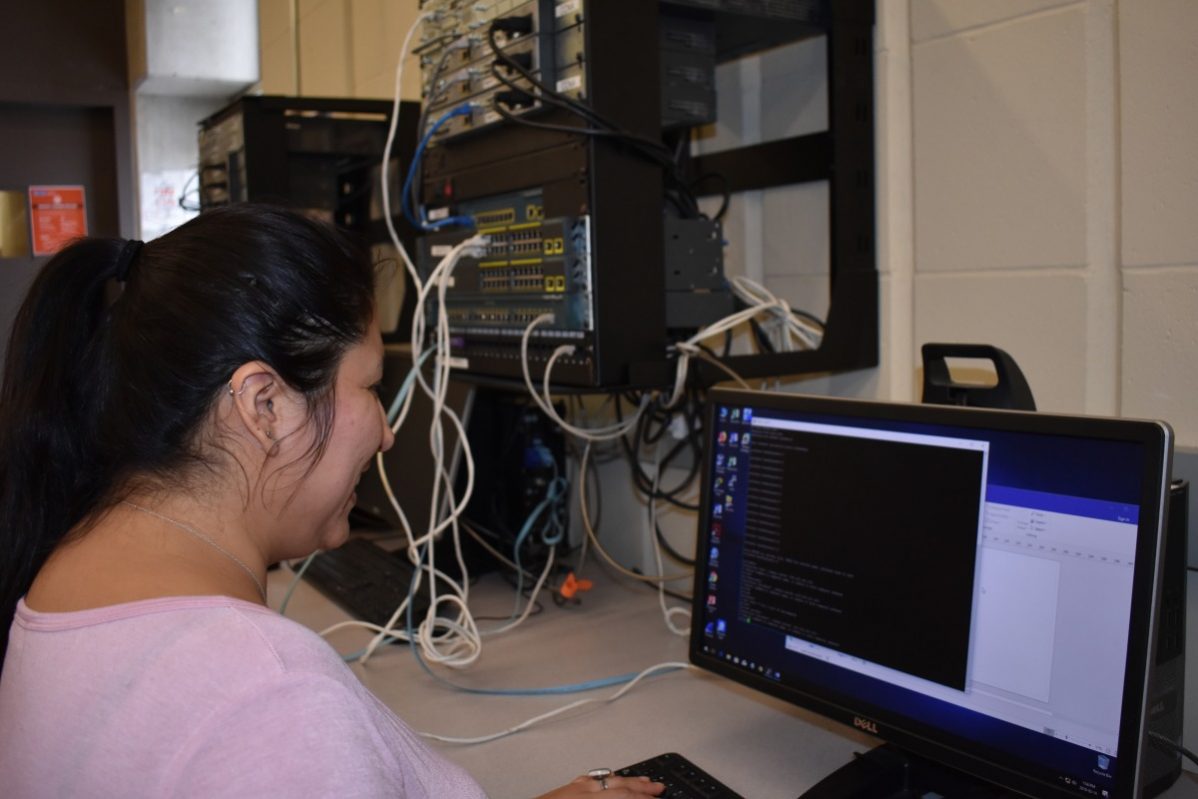GBC student is hopeful for a better future for women pursuing a career in STEM
Women are vastly under-represented in science, technology, engineering, and mathematics (STEM) fields.
According to a 2018 study done by the Information and Communications Technology (ICT) Council, the percentage of women employed in ICT has averaged 24 to 25 per cent from 2007 to 2017.
Why is there still such an under-representation of women in STEM fields?
“Over the years there have been a lot of discouraging sentiments among the public that seem to have made it less attractive for girls to advance in the STEM fields,” said Lori West, director of the Alberta Transplant Institute and Canadian Donation and Transplantation Research program.
“The way their success (in a STEM field) is evaluated, could sometimes have an inherent bias against understanding the importance of what they’ve done and the skills with which they’ve done it,” she said.
STEM fields display a visible and systematic gender gap, especially in areas of technology.
A study by Statistics Canada in 2011 indicated that women made up only 33 per cent of STEM university graduates. However, women account for 60 per cent of non-STEM university graduates.
The difference in the female-to-male ratio in STEM fields is reflected among students of different technological programs at George Brown College.
Maria Marin, a computer systems technician student at the Casa Loma campus talked about this pattern.
“I think if you go to any classroom on a given day, you will notice that about 60 to 70 per cent of students are males,” she said.
Marin also pursued a diploma in a technological field 15 years ago. This time, however, she finds the number of men in her program less overwhelming as there are a lot more women.
West said another concern for women pursuing STEM fields is that in their undergraduate and graduate years, they are often at an age where they may want to start a family.
As the workforce of STEM fields is mostly populated by men, many workplaces in the field still do not have adequate facilities for mothers of newborns. A career in a STEM field may also come with frequent travelling for attending international conferences and training, which could be an added challenge for people who have to care for children.
There are hardly any nurseries or a separate room for breastfeeding at some of these workplaces, which is a valid concern for women, West stressed. She also said that working in such circumstances would be easier for her male colleagues.
In a field like ICT, where only a quarter of the people employed are women, Marin remains hopeful and encourages other female students to do the same.
“Don’t give up. I know it’s very overwhelming. I know it’s new. It’s also very, very challenging, but we’re not born knowing everything. So if you’re willing to give it your all, willing to learn (and) find resources, you can do it,” she said.
West offered similar advice, “If this is something you love and want to do, then it’s important to try to find a way to do it. Because you won’t be happy if you leave it behind for the wrong reasons.”


